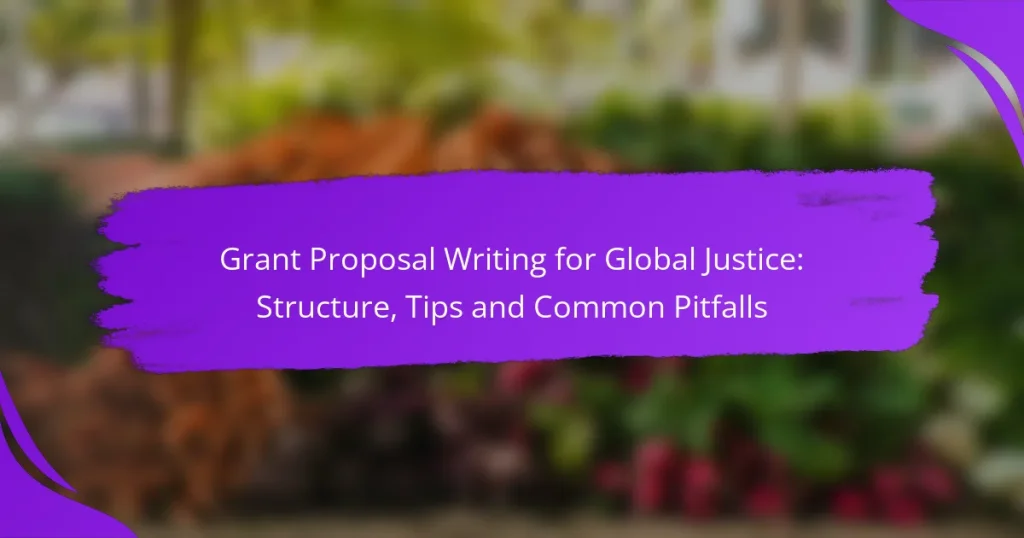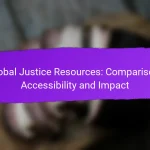Writing a grant proposal for global justice requires a clear structure that effectively communicates your project’s purpose, needs, and expected outcomes. By aligning your proposal with the funding agency’s goals and avoiding common pitfalls, such as vague objectives and complex language, you can enhance clarity and improve your chances of securing funding.
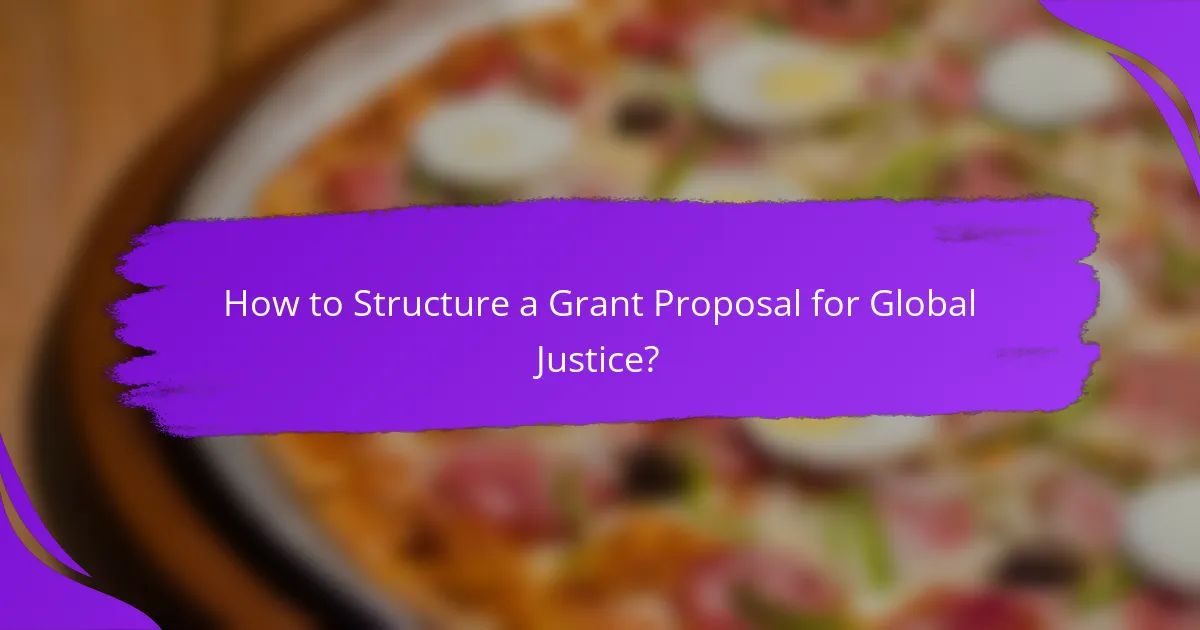
How to Structure a Grant Proposal for Global Justice?
Structuring a grant proposal for global justice involves organizing your content to clearly communicate the project’s purpose, needs, and expected outcomes. A well-structured proposal enhances clarity and increases the chances of securing funding.
Executive Summary
The executive summary provides a concise overview of the entire proposal, summarizing the key points in a few paragraphs. It should capture the essence of the project, including the problem, objectives, and expected impact.
Focus on clarity and brevity; aim for a length of about one page. Use engaging language to draw in the reader, as this section sets the tone for the rest of the proposal.
Problem Statement
The problem statement articulates the specific issue your project aims to address within the context of global justice. Clearly define the problem, including its scope and significance, to demonstrate why it matters.
Support your claims with relevant data or case studies, and explain how this issue affects the target population. Avoid vague language; be specific about the challenges faced.
Objectives and Goals
Objectives and goals outline what your project intends to achieve. Objectives should be specific, measurable, achievable, relevant, and time-bound (SMART), while goals can be broader and more aspirational.
For example, an objective might be to increase access to education for 500 children in a specific region within two years. Clearly linking objectives to the problem statement strengthens your proposal.
Project Description
The project description details the activities and strategies you will implement to achieve your objectives. Include a timeline, methodologies, and the roles of team members to provide a comprehensive view of the project.
Consider using a logical flow to present your activities, and ensure that each step aligns with your objectives. Highlight any innovative approaches or partnerships that enhance your project’s effectiveness.
Budget Overview
The budget overview outlines the financial resources required to implement your project. Provide a detailed breakdown of costs, including personnel, materials, and administrative expenses.
Be transparent about funding sources and how funds will be allocated. Consider including a table for clarity, and ensure that your budget aligns with the objectives and activities outlined in your proposal.
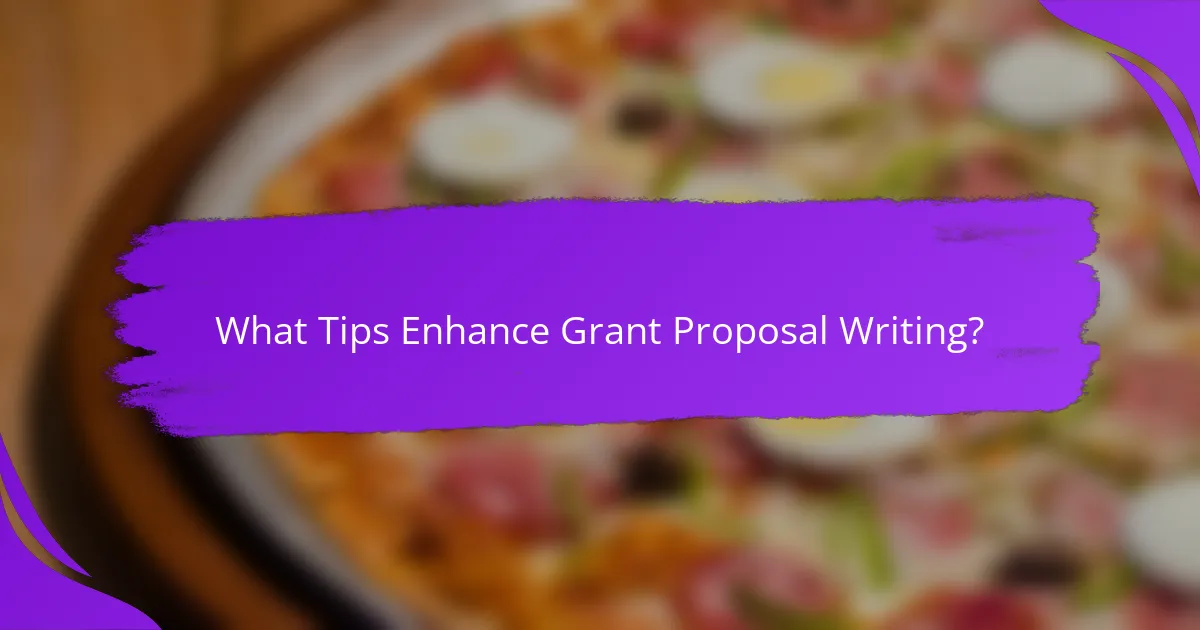
What Tips Enhance Grant Proposal Writing?
Effective grant proposal writing requires clarity, focus, and a strong alignment with the funding agency’s goals. By employing specific strategies, you can significantly improve your chances of securing funding for global justice initiatives.
Clear and Concise Language
Using clear and concise language is essential in grant proposals. Avoid jargon and overly complex sentences that may confuse reviewers. Aim for straightforward expressions that convey your message effectively.
Consider using bullet points for lists or key information to enhance readability. This approach helps reviewers quickly grasp the main points without wading through dense text.
Tailoring to Funding Agency
Each funding agency has its own priorities and guidelines, so tailoring your proposal is crucial. Research the agency’s mission, past funded projects, and specific requirements to align your proposal with their interests.
Highlight how your project addresses the agency’s goals and demonstrate your understanding of their funding criteria. This alignment increases the likelihood of your proposal resonating with reviewers.
Incorporating Data and Evidence
Incorporating relevant data and evidence strengthens your grant proposal by providing a solid foundation for your claims. Use statistics, case studies, and research findings to illustrate the need for your project and its potential impact.
Ensure that the data you present is current and sourced from credible organizations. This not only enhances your proposal’s credibility but also shows that you are informed about the field and its challenges.
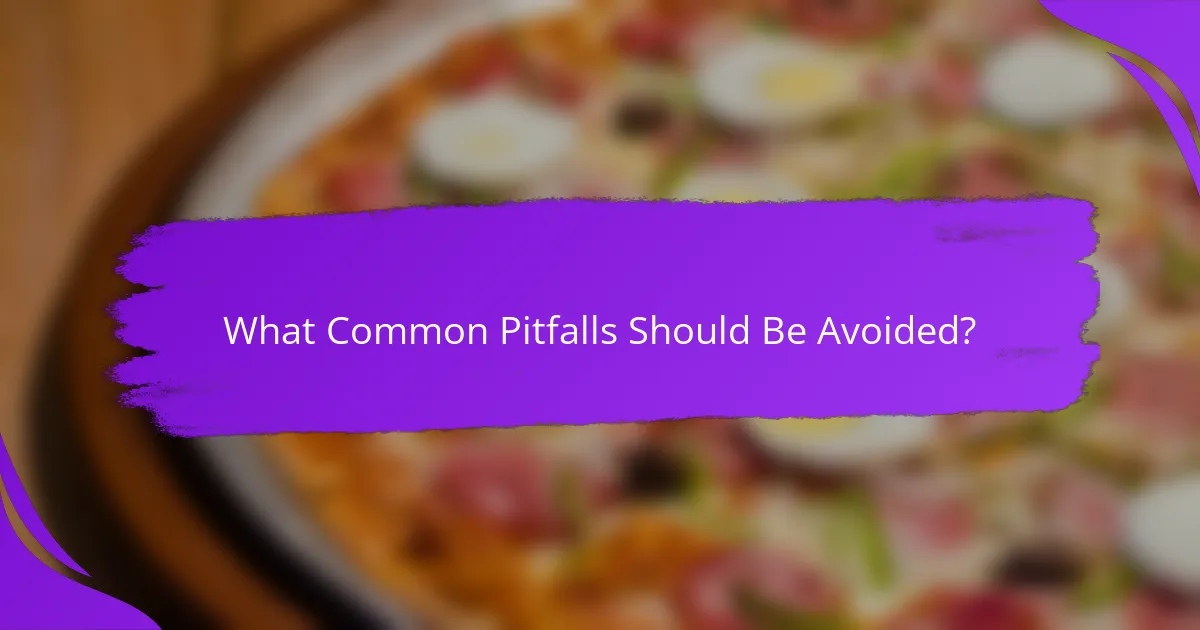
What Common Pitfalls Should Be Avoided?
Avoiding common pitfalls in grant proposal writing is crucial for success. Key issues include vague objectives, ignoring guidelines, and using overly complex language, all of which can undermine your proposal’s effectiveness.
Vague Objectives
Vague objectives can lead to misunderstandings about your project’s goals and outcomes. Clearly defined objectives should be specific, measurable, achievable, relevant, and time-bound (SMART). For example, instead of stating “improve community health,” specify “increase access to healthcare services for 500 low-income families within one year.”
To avoid vagueness, consider using bullet points to outline objectives. This approach helps clarify your intentions and makes it easier for reviewers to understand the project’s purpose and expected impact.
Ignoring Guidelines
Ignoring grant guidelines is a frequent mistake that can result in disqualification. Each funding body has specific requirements regarding format, length, and content. Familiarize yourself with these guidelines before you start writing to ensure compliance.
Make a checklist of the key requirements, such as page limits, font size, and required sections. Regularly refer to this checklist throughout the writing process to stay on track and avoid missing critical elements.
Overly Complex Language
Using overly complex language can alienate reviewers and obscure your message. Aim for clarity and simplicity in your writing. Avoid jargon and technical terms unless absolutely necessary, and always define them if you use them.
To enhance readability, use short sentences and active voice. For instance, instead of saying “The implementation of the program will be conducted by the team,” say “The team will implement the program.” This straightforward approach makes your proposal more accessible and engaging.
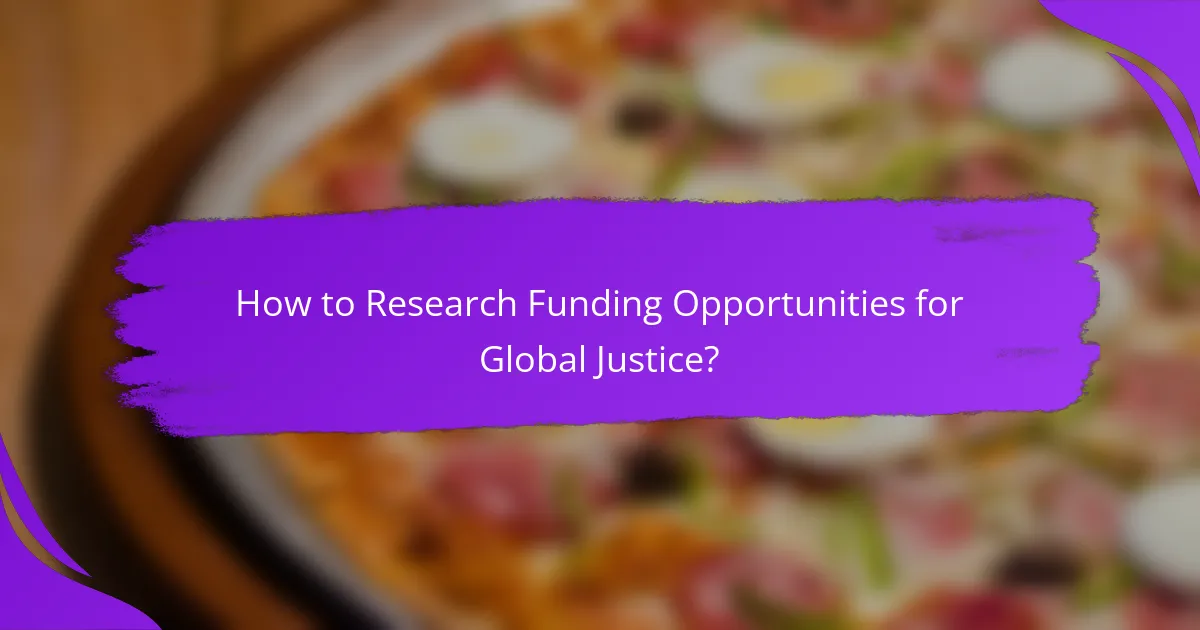
How to Research Funding Opportunities for Global Justice?
To effectively research funding opportunities for global justice, start by identifying organizations that align with your mission and objectives. Focus on understanding their funding priorities, application processes, and deadlines to enhance your chances of success.
Identifying Relevant Grantmakers
Begin by compiling a list of grantmakers that focus on global justice issues, such as human rights, environmental justice, or social equity. Look for foundations, government agencies, and international organizations that have a history of funding similar projects.
Utilize resources like the Foundation Center or local philanthropic networks to find potential funders. Pay attention to their funding criteria and past grants to ensure alignment with your project goals.
Using Grant Databases
Grant databases are valuable tools for discovering funding opportunities. Platforms like GrantStation, FundsforNGOs, and the European Commission’s funding portal can help you search for grants by category, region, or funding amount.
When using these databases, filter your search to focus on grants that specifically support global justice initiatives. Keep track of application deadlines and requirements to streamline your proposal submissions.
Networking with Other Organizations
Networking is crucial for uncovering funding opportunities. Connect with other organizations working in the global justice space to share insights and resources. Attend conferences, workshops, and webinars to expand your network and learn about potential funders.
Consider joining coalitions or alliances that focus on global justice issues. These groups often have access to exclusive funding opportunities and can provide valuable advice on successful grant applications.
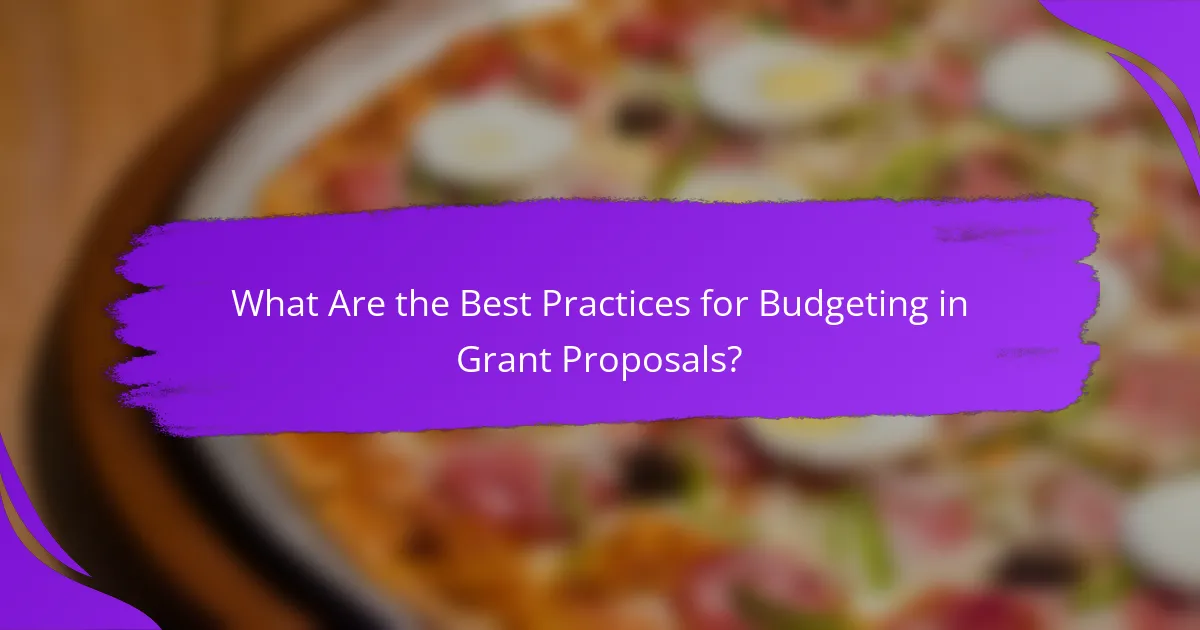
What Are the Best Practices for Budgeting in Grant Proposals?
Effective budgeting in grant proposals involves creating a clear, detailed financial plan that aligns with project goals. A well-structured budget not only demonstrates financial responsibility but also enhances the proposal’s credibility.
Itemized Budget Breakdown
An itemized budget breakdown lists all expenses associated with the project, categorized by type. This includes personnel costs, materials, travel, and any other relevant expenses. Each item should have a corresponding cost estimate, allowing funders to see exactly how their money will be spent.
For example, if your project requires hiring a consultant, specify the hourly rate and estimated hours needed. Providing a clear breakdown helps funders understand the financial scope and justifies the total budget request.
Justifying Expenses
Justifying expenses is crucial in demonstrating the necessity of each budget item. Each cost should be explained in relation to project objectives, showing how it contributes to achieving desired outcomes. This can include providing market rates for services or detailing the specific need for certain materials.
For instance, if you request funds for training sessions, explain how these sessions will enhance team skills and improve project effectiveness. Funders appreciate transparency and a clear rationale for each expense.
Including Indirect Costs
Indirect costs, often referred to as overhead, cover expenses that are not directly tied to a specific project but are necessary for overall operations. These can include administrative salaries, utilities, and office supplies. Many funding agencies allow for a percentage of the total budget to be allocated for indirect costs.
When including indirect costs, check the funder’s guidelines for allowable rates, which typically range from 10% to 20% of the total budget. Clearly outline these costs in your proposal to avoid confusion and ensure compliance with funding requirements.

How to Evaluate the Success of a Grant Proposal?
Evaluating the success of a grant proposal involves assessing whether the project met its objectives and delivered the intended outcomes. Key indicators include the achievement of measurable goals, adherence to the budget, and the overall impact on the target community.
Setting Measurable Outcomes
Setting measurable outcomes is crucial for evaluating a grant proposal’s success. These outcomes should be specific, quantifiable, and time-bound, allowing stakeholders to assess progress effectively. For example, instead of stating “improve community health,” specify “increase the number of health screenings by 30% within one year.”
Consider using the SMART criteria—Specific, Measurable, Achievable, Relevant, and Time-bound—to guide the development of outcomes. This framework helps ensure that the goals are realistic and aligned with the project’s mission. For instance, a project aimed at reducing homelessness might set an outcome of “providing stable housing for 50 families within 18 months.”
Common pitfalls include setting vague or overly ambitious outcomes that are difficult to measure. Avoid using terms like “enhance” or “improve” without clear metrics. Instead, focus on tangible results that can be tracked and reported, such as the number of participants served or the percentage increase in knowledge or skills among beneficiaries.
